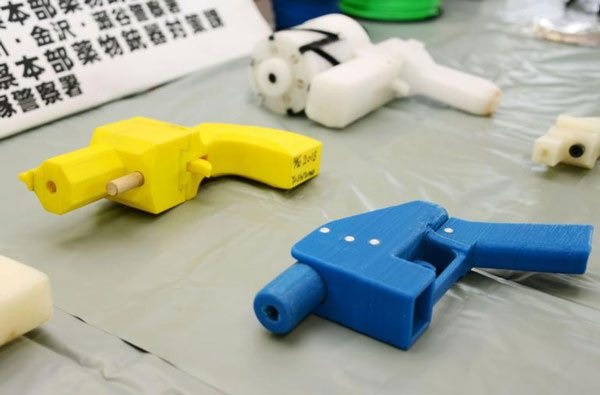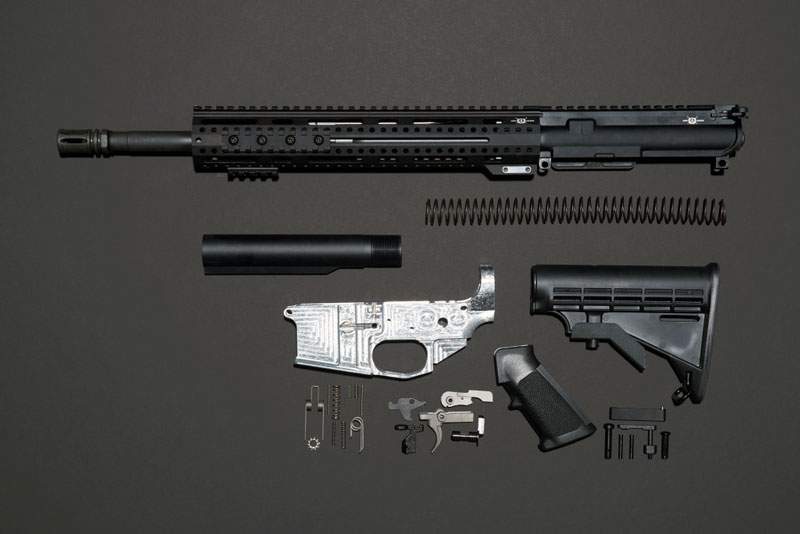3d Print a Functional Airsoft Gun
3d Print a Functional Airsoft Gun
3D printing, a considerable shake-up in the gun industry
Avant-garde customization and low production costs are among the advantages of 3D printing for making firearms. Note that it is possible to 3D print gun parts such equally the magazine or the handle. 3D printing the most important parts like the bedroom or the butt is a challenge.
The most credible choice for homemaking a gun is past crafting a lower receiver equally demonstrated in the Wired video below. The machine capable to plough an aluminum block into a gun role is a lot closer to a milling car than a 3D printer.
To prove their expertise, some companies like Solid Concepts made metal3D printed guns. Metal 3D printing engineering science is far too expensive and complex for individuals nowadays.
The most notable 3D printed firearms
In May 2013, the first 3D-printed gun was exam-fired by Cody Wilson. This plastic pistol was produced past net activists Defense force Distributed under the name 'Liberator'.
The Liberator .038 is fabricated out of 3D printed ABS, with the exclusion of a single nail used equally the firing pin.

In August 2013, a Canadian homo going by the name "Mathew" 3D printed an actual rifle, a Grizzly .22 Caliber Burglarize model.
In September 2013, the Hexen organization produces the Reprringer Pepperbox .22 Revolver. The weapon can hold 5 bullets at once in its 3D-printed barrel.
In Nov 2013 Solid Concepts, now a Stratasys brand, 3D printed an operational metal gun.
The Browning 1911 Metallic Replica fired more than 600 bullets without any damage to the gun.
In May 2014, Yoshitomo Imura 3D printed and fired a Zig Zag .38 Revolver. He was later arrested and bedevilled for owning four 3D-printed plastic pistols at his firm.

In July 2014, a Usa citizen nicknamed "Buck O'Fama" 3D printed a receiver for a semi-automated .22 Ruger Charger pistol.
The Ruger Charger accepts high-capacity mags holding 30 rounds or more. It is capable of shooting a total magazine without problems.
In May 2015, a man nicknamed Derwood, 3D printed the 'Shuty', a 9-mm semi-auto based on a combination of parts from a standard AR-15 and a P.A. Luty.
The design for the Shuty combines a metal bolt, an AR burn-control group, and the barrel of a Glock. The magazine, commodities carrier, upper and lower receivers are all 3D printed.
In September 2015, a college pupil named Chris, 3D printed a semi-automatic revolver chosen the 'Yoshee Six Shooter'. The Yoshee Six Shooter is a revolver-style weapon that has multiple barrels and tin can fire multiple shots without reloading. It includes a 3D printed grip, hammer, spring, butt, and butt holder. A metal spiral is used as a firing pivot to strike the rim of the bullets.
In November 2015, an applied science educatee called James Patrick has congenital a 3D printable revolver that uses a condom band and a nail to fire .22 bullets. The revolver called PM522 Washbear tin hold six or eight bullets and tin can shoot them in a row. This is non the first 3D printed gun fabricated past Patrick who also made a previous model (single shot) called the Songbird.
In January 2016, the now-famous Derwood, 3D printed a new gun of its design, the 'Shuty MP-1'. This 3D printed gun is a 9 mm semi-automatic pistol made from 95% 3D printed parts.
However, the remaining components and well-nigh circuitous parts of the 3D printed gun are made of metal: store-bought Glock barrel, hammer, firing pivot, bolts, and springs. Derwood has been able to shot more than than 600 hundred cartridges with his Shuty MP-1.
Co-ordinate to him, the plastic property the barrel starts to melt after most 18 shots so information technology is better to let the gun cool off regularly.
The legal issues of 3D printing untraceable gun parts and 3D printing gun laws
Well-nigh gun parts (magazine, pistol grip, upper receiver) can exist bought online without any tracking records. But the receiver stands out as 1 of the near complex and important parts.
The Ghost Gunner past Defence Distributed is a CNC milling machine capable of making AR-15 lower receivers. The AR-15 is similar an AR-10 but uses smaller components for firing 0.223 caliber bullets. Like other CNC mills, the Ghost Gunner uses a digital file to carve objects out of aluminum.
The Ghost Gunner produces an unserialized AR-fifteen lower receiver from a pre-engineered aluminum part (called 80 percent lower) in a few hours.
As a event, the burglarize itself is untraceable: it is a ghost gun. Which raises major legal and security issues…

In 2013, the UK Home Office introduced stricter regulations on 3D printed guns and 3D printed firearms, making it highly illegal to create, buy, or sell them or 3D printed gunparts in Dandy Britain.
In November 2015, the parliament of the state of New South Wales, Australia, passed one of the strongest prohibition laws confronting 3D-printed guns. This law called Firearms and Weapons Prohibition Legislation Amendment Bill 2015, intends to penalize both physical and digital possession of 3D printable guns the same way as any illegally endemic firearm holder. More than information tin can be found in this 3D press Industry commodity.
California passed a law in July 2016 requiring anyone who makes or assembles a homemade firearm to utilize for a serial number or "other mark of identification" from the country Department of Justice.
Around Asia, notable laws on 3D printed guns includeSingapore, where possession of a 3D printed gun is punishable by death.
In 2017,China introduced the Chongqing regulation which required manufacturers involved in 3D printing to annals with the government to help prevent 3D press technology from being used to produce illegal items (including blueprints) such as firearms.
As of 1st Baronial 2018, Defence force Distributed is again allowed to publish designs for 3D printed guns after the United states Department of State agreed to waive its prior 2015 restraint guild against Cody Wilson and Defense Distributed. Therefore individuals are allowed to freely publish designs and other technical files near 3D printed guns in the U.s..
3d Print a Functional Airsoft Gun
Posted by: cardwelltemond.blogspot.com
0 Response to "3d Print a Functional Airsoft Gun"
Post a Comment